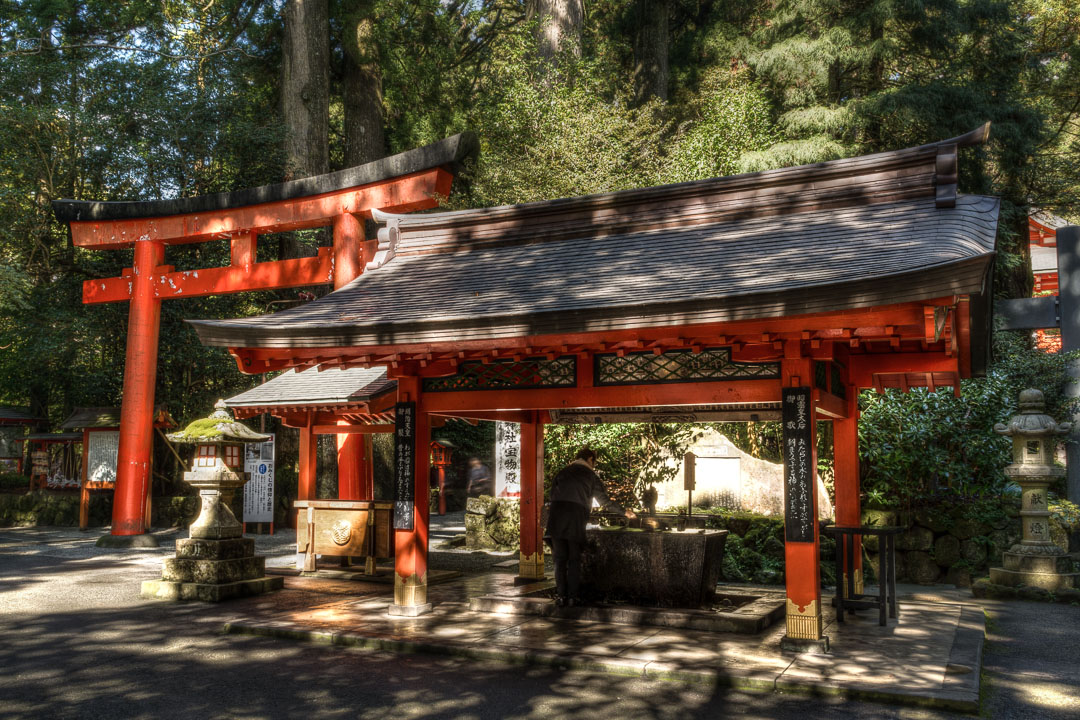Temizuya (water purification pavilion) Covered with Snow in Toyota City
Share

Shinto shrines in Japan share many common features, whether they are large complexes or small local shrines. Just like the haiden (worship hall), the temizuya (water purification pavilion) is not only found at all Shinto shrines, but is also an important part of the spiritual ritual of a shrine visit.

DMC-LX3 (5.1mm, f/2.8, 1/160 sec, ISO80)
temizuya (purification basin) covered in snow at Wakamiya-Hachiman-sha Shrine (若宮八幡社) in Toyota City, Aichi Prefecture
This temizuya is located near my 1LDK apartment in Toyota City near Nagoya in Aichi Prefecture. Such snowfall isn’t common, so I took a walk and found a stunning scene of snow covered shrine buildings at the small local shrine, Wakamiya-Hachiman-sha Shrine「若宮八幡社」. The pavilion is made from unpainted wood and the water basin is made of stone.
See another photo, in HDR, of the main hall at the shrine. It’s one of the most viewed photos of mine on Flickr.
View this location - Map coordinates: 35.030187,137.145856.
I lived in Toyota for 1 year and worked as an Assistant Language Teacher (ALT) in 2 Japanese junior high schools. During this time I lived in the Ekakushinmachi area, a short walk from Suenohara station. Toyota is known as an industrial city, and it seemed that every second Japanese friend I made worked for the Toyota Motor Corporation.
Toyota isn’t exactly a tourist hot spot, but I have many friends still in the city and return every year to catchup with the long term ALTs who call the city home.


